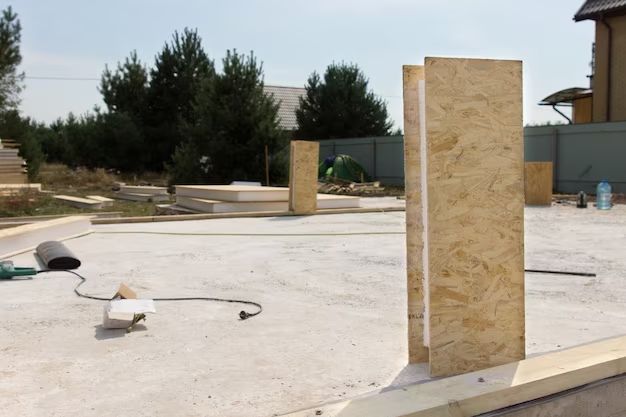When installing wood flooring over a concrete subfloor, proper preparation is crucial for ensuring a smooth and long-lasting finish. There are several key steps involved in prepping concrete for wood floors, including assessing moisture levels, cleaning and leveling the surface, and applying the right adhesives or underlayments.
Page Contents
Assessing and Addressing Moisture
One of the most important preparatory steps is testing the concrete moisture levels. Wood flooring needs the subfloor moisture content to be below 3-5% before installation. Excess moisture can cause warping, cupping, gapping, and other damage over time.
Here are some tips for checking and dealing with concrete moisture:
- Use a concrete moisture meter to measure moisture vapor emission levels. Take readings across the entire slab and keep records.
- Conduct a plastic sheet test by taping down a 24″ x 24″ plastic sheet for 24 hours. If condensation forms under the sheet, moisture is too high.
- Allow new concrete slabs to cure for at least 60-90 days before testing moisture levels.
- Use a concrete sealer or moisture barrier coating if moisture levels exceed the manufacturer’s recommendations.
- An underlayment like cork can also help minimize moisture-related issues.
Addressing moisture issues upfront will help prevent floor damage or debonding down the road.
Cleaning and Repairing the Surface
Once moisture levels are checked, the next step is making sure the concrete surface is clean and ready for the floor installation. Here’s what to do:
- Thoroughly sweep and vacuum up any debris or dirt.
- Use a concrete degreaser to remove oil, grease, wax, or other residues.
- Etch the surface with an acidic concrete etching solution if the concrete is very smooth.
- Repair any cracks, holes, deteriorated areas, or other surface defects.
Proper cleaning removes contaminants that could undermine floor adhesives. Etching opens up the concrete’s pores to accept glue. And patching holes or cracks prevents unevenness.
Leveling and Smoothing
For the wood flooring to have a flat, even finish, the concrete must be leveled smooth. Unevenness in the subfloor will transfer through to the wood surface.
Here are ways to level and flatten the concrete:
- Grind down any high spots using a concrete grinding machine.
- Fill in low areas with a concrete leveling compound, allow to fully cure.
- Pour a cement-based underlayment to create a smooth, durable surface.
The concrete should be leveled to a maximum variation of 1/8″ over 10 feet. Use a straightedge tool to check for flatness.
Choosing the Right Adhesive
Gluing the wood flooring directly to the concrete is one installation method. Choose the appropriate concrete flooring adhesive based on the wood flooring type:
| Flooring Material | Recommended Adhesive Types |
|---|---|
| Engineered wood planks | Urethane, epoxy |
| Solid wood planks | Urethane, polyurethane |
| Parquet wood tiles | Urethane, epoxy |
Follow the adhesive manufacturer’s instructions for proper trowel size, open times, and installation methods. Using the right glue prevents detachment or buckling.
Using Underlayments
Underlayments can provide extra moisture protection and smoothing for wood floors over concrete. Common options include:
- Cork underlayment: Made from compressed cork granules, provides cushioning and soundproofing.
- Foam underlayment: Closed-cell foam adds moisture resistance and sound dampening.
- Felt paper: A fiber material that blocks some moisture and absorbs sound.
- Rubber underlayment: Made from recycled rubber for cushioning and moisture protection.
Attach underlayments with small nails or double-sided tape. Seam edges should butt together but not overlap.
Acclimating the Wood Flooring
Before installing the wood over concrete, let it acclimate to the room’s temperature and humidity levels:
- Unstack boxes of wood flooring and spread them out.
- Allow to sit for 72 hours minimum in the climate-controlled installation area.
- Follow the manufacturer’s specific acclimation instructions.
Slow acclimation prevents excessive expansion or contraction later on. Don’t install wood flooring until fully acclimated.
Expansion Gaps
Wood flooring expands and contracts with natural humidity fluctuations. Leave proper expansion gaps between boards and at edges to allow movement:
- Leave a 1/2″ gap between flooring and walls or other fixed objects.
- Stagger end joints of boards rows by at least 6″.
- Follow the manufacturer’s recommendations for board gap widths.
These gaps can be covered with trim or floor edge molding after installation. Maintaining expansion space prevents buckling.
Working Clean
During the entire concrete preparation and wood flooring installation process, keep the area clean:
- Frequently vacuum up any dust and debris.
- Place walk-off mats at entryways to reduce tracked-in dirt.
- Keep foot traffic to a minimum until adhesives fully cure.
- Clean up spills immediately to avoid stains or damage.
A clean working area prevents contaminants from interfering with adhesion or scuffing the new wood floor’s finish.
Conclusion
Prepping a concrete subfloor takes time and care to do right. But following these essential steps—testing moisture, cleaning and leveling the slab, choosing adhesives, allowing proper acclimation and expansion space—will provide the smooth, durable foundation needed for long-lasting wood flooring.
Key Takeaways
- Check moisture levels and apply sealers or barriers if humidity is too high.
- Clean, etch, and repair cracks or holes in the concrete surface.
- Level out any unevenness for a flat subfloor.
- Select quality flooring adhesives suitable for concrete and wood.
- Use underlayments like cork for extra moisture protection.
- Allow proper acclimation time before installation.
- Leave adequate expansion gaps between flooring.
- Always keep the work area clean.
With the right prep work completed, you can install beautiful, durable wood floors over concrete for years of lasting enjoyment.
